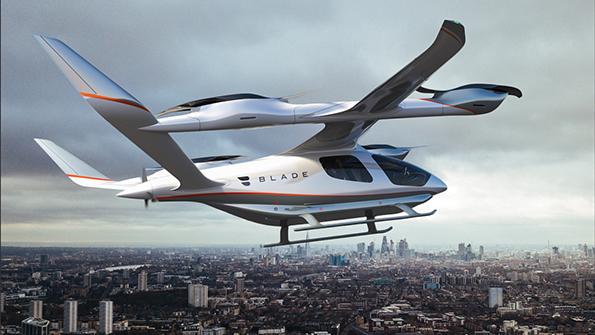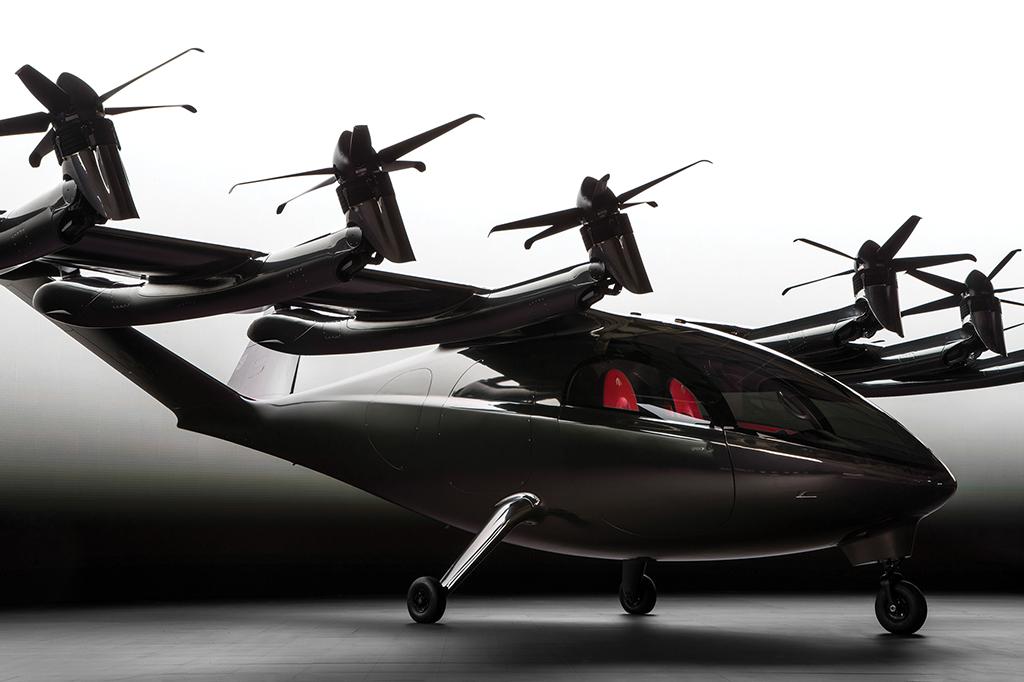
Airlines are looking to dip their feet into the nascent advanced air mobility sector by placing orders for electric vertical-takeoff-and-landing vehicles under development by a host of startups.
But while industry-watchers agree that opportunities are plentiful for the new aircraft, some major questions remain about how they will fit into airline business models.
- Airlines seek environmental, social and governance boost, but orders are strictly conditional
- Infrastructure, noise and logistics all complicate the airport access use case
Major airlines have begun placing conditional orders for hundreds of the new electric vertical-takeoff-and-landing (eVTOL) vehicles (see table below). United Airlines, together with its regional partner Mesa Airlines, preordered 200 of Archer Aviation’s Maker electric air taxis in February. American Airlines followed suit in June with a conditional order for up to 250 VA-X4 aircraft under development by Vertical Aerospace, part of a deal that also includes preorders for lessor Avolon and options for Virgin Atlantic. And JetBlue Airways has taken on an early role as a backer of Joby Aviation through its JetBlue Technology Ventures fund.
But while the orders generate positive publicity and look good from an ESG—environmental, social and governance—standpoint, it remains far from clear how exactly airlines plan to incorporate the new technology into their existing fleet and network strategies.
“I don’t think that any of these orders are based on knowing with any exactitude how this equipment is actually going to be used,” Craig Jenks, president of consultancy Airline/Aircraft Projects, tells Aviation Week. “The spectrum of different ways that they can be used is absolutely huge, but you don’t know which uses will be winners.”
Cowen analyst Cai von Rumohr takes a skeptical view of the level of commitment behind the conditional orders from major carriers. He noted that these orders only require minimum up-front deposits and can be dropped altogether if the projects do not go as expected.
“The airlines’ current eVTOL investments look mainly like relatively cheap opportunities to boost ESG ratings,” von Rumohr wrote in a June 17 report.
One of the most discussed applications for the new aircraft is intracity travel, akin to a ride-share service operated by Uber or Lyft. Airlines and analysts have seized on the opportunity for transportation from downtown points to a nearby airport in cities such as Los Angeles or New York. The opportunity is large: Von Rumohr estimates that 93% of the world’s top 100 airports are located within 20 mi. of their city centers.
However, this market segment will pose a set of massive challenges on the way to adoption. The necessary infrastructure needs to be built out, including numerous skyports in downtown centers and nearby airports. Because urban air mobility (UAM) is not a door-to-door service, passengers may need to take two separate Uber or cab rides to and from the skyports, reducing the convenience of the trip. Time-of-day imbalances could also occur, with many business people traveling the same direction during peak times and aircraft utilization lagging in off hours. And crowded airspace will create air traffic control challenges and present a need for fast innovation for controllers to keep pace with the projected explosion in UAM.
“Airport access is just one of many ways this equipment could be used, but to me it’s not necessarily the most compelling case,” Jenks says. “In a place like Manhattan, there are limited potential ports, and at large airports it’s not so easy to just drop a passenger off near the terminal. You may have a situation where passengers are doing three-legged trips from the UAM port to the drop-off point in the airport and from that point to the terminal. That won’t be easy to pull off.”
To make these trips more seamless, Joby is pitching an app that will arrange trips for passengers with an Uber ride to and from the departing and arriving skyports. Still, the handoffs between the skyports and Ubers will not be frictionless, likely limiting customer preference to trips that are longer than the 8-mi. average for ground-based ride-sharing services, according to von Rumohr.
Assuming airlines do dive into the airport shuttle business, that would amount to a substantial broadening of their existing businesses, akin to taking on ground transportation such as an in-house taxi or limousine service. Airlines have tried their hand at such services in the past with little success. (Virgin Atlantic, one of the last to do so, scrapped its car chauffeur service in February 2020.) So does it really make sense for airlines to get into the airport shuttle business?
“Adding complexity to your present business that doesn’t reinforce your core business significantly would seem to be a mistake,” says George Hamlin, president of Hamlin Transportation Consulting. “You’re going to get management distracted from its present mission, which thus far has not proven to produce robust profits over a long period of time for most airlines apart from Southwest.”
Finding appropriate locations in which to establish skyports within large cities in areas that have sufficient density may also prove difficult. The current infrastructure to support helicopters in many urban areas is extremely limited. Many large buildings have HVAC units or water towers on their roofs. Placing the skyports too close to residential buildings could also pose unacceptable levels of noise and generate opposition from neighborhood groups. Joby has partnered with Reef Technology, a parking garage operator and real estate acquisition company, to build out its network of skyports, although von Rumohr noted that many parking garages may be inconvenient locations for downtown operations.

Aside from intracity commuting and airport access, a more compelling use case for eVTOLs may be to enable travelers to take short-haul flights to hard-to-access, niche leisure markets. Martha’s Vineyard and Nantucket, Massachusetts, or Block Island, Rhode Island, for example, would potentially be in reach from the New York area—making a long trip by car shorter and more convenient with eVTOLs. On the West Coast, there are a number of mountain and ski areas that could be in reach with the new aircraft. However, the economics of ferrying small numbers of people on such routes may prove challenging for airlines.
“It sounds nice, but the demand has got to be looked at very carefully,” Hamlin says. “Just because you can do something like that doesn’t mean anyone’s going to make any money doing it.”
Ultimately, the bigger opportunity for airlines may prove to be the electrification of small regional jets made possible by battery and electrification technologies pioneered through eVTOLs, rather than the immediate applications of the aircraft themselves. Jenks notes that there is a “huge gap” in the market for regional aircraft with 50 or fewer seats.
“If you asked me what airline networks really need right now that they don’t have, my answer would be 30-40-seat battery electric-powered airplanes,” Jenks says. “Right now, carriers are stuck buying the latest version of 30- or 50-year-old twin-engine airplanes. The history of technology suggests that, at some point, there will be radical disruption, and airlines want to be part of that when it happens.”






Comments
Gravity insures that flight has been and will always be expensive. eVTOL can repeal neither the laws of physics nor those of finance. eVTOL will only be "affordable" for the very well off.